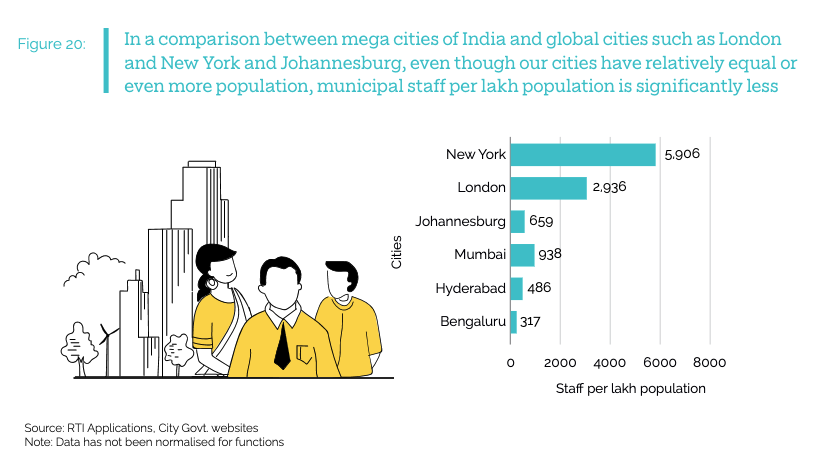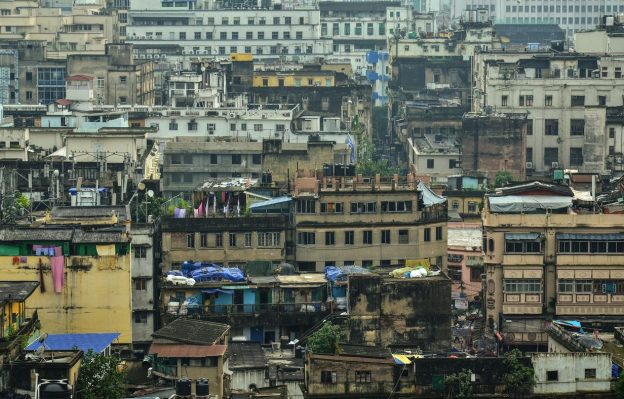India is home to some of the world’s most populous cities with projected urbanisation figures standing at 43% of its population by the year 2035. The pace of urbanisation has brought along with it, the challenges of sustainability and the need to adapt and cope with the changing climate and the threats posed by it.
The IPCC Sixth Assessment Report warns of extreme weather events triggered by glacier melts resulting in flooding across the subcontinent, in the recent past, much of this has come true with poor urban planning and adaptation furthering the threat. Cities such as Chennai and Bangalore have been the latest additions to this list of flood-prone regions, with Mumbai and a few in the Northeast having been on the radar for more than a decade now.
India’s growing ambition to urbanise and catch up with the developed world requires us to plan and grow sustainably by paying heed to nature’s ecosystem boundaries and the identified commons. Most urban planning today is in conflict with this approach. Balancing both is seldom discussed, making it an urban planner’s nightmare.
Why are cities an important component of the climate fight?
Cities, by the neoliberal world order, are understood to be growth engines and aspirational hubs for upcoming generations to thrive in. As a result, cities today constitute for about half of the world’s population. The global greenhouse gas emissions attributed to cities, according to the World Bank, are said to be a whopping 70%, underlining them as the real-time carbon guzzlers.
Several studies over the years have clearly made a distinction between the per-capita consumption of carbon in low, middle and high-income countries and have noted specifically that developing nations such as India and others together contribute to less than 14% of the global, urban, carbon-dioxide emissions. It is now amply clear that the climate adaptation risks posed by the warming planet are being borne the most by low- and middle-income countries such as ours.
Many lower income countries such as India, Nepal and Bangladesh have all experienced severe heatwaves, flooding, water stress and dramatic cyclones and changes in weather patterns in their urban spaces. The projected figures for risk seem to be on the rise for these nations in comparison to those in the developed world. Indian cities in particular have seen a wave of catastrophic developments in the recent past – heat waves in Delhi and central India, flooding in the hill towns and metropolises down south caused by cloud bursts and the constant hurdle of poor air quality threatening the lives of millions, have all been issues attributed to the menace caused by global warming.
The changing patterns of climate and water distress in the rural areas has also added to an influx of urban-climate refugees; challenging the cities to plan and account for inclusive growth, a challenge that is at the forefront of planning and development of climate resilient cities today.
What’s missing?
One of the key things that occur to me, as far as Indian cities are concerned, is the aspect of ‘inclusive, local governance ’. The 74th Amendment Act constituted in the 90’s outlined the vision and mechanisms for ‘Urban Local Governance’ under the municipalities or the Urban Local Bodies. The adoption of city-centric adaptive mechanisms for climate resilience and sustainable expansion of a city is an important component that needs to be understood thoroughly and integrated into the planning architecture of a city.
Cities today are tasked to devise a Climate Action Plan that shall take into account the city’s overall consumption patterns of greenhouse gas emissions as well as the sustainable pathways for equitable and inclusive growth. The institutional capacities, particularly at the ULBs, to comply and adhere to this ambitious goal are lacking in its entirety. A recent report released by one of our partner organisations, Janaagraha Annual Survey of India’s City- Systems speaks at length regarding the administrative deficit and the need to revamp capacities to tackle climate-specific challenges.
The survey specifically talks about the financial challenges as well as the lag in addressing the vacancies affecting the functioning of the local governments. While comparing Indian cities to the rest of the world, the survey further builds a case for an increase in municipal staffing per lakh population. Bangalore and Mumbai have less than a 1,000 municipal personnel attending to per lakh population whereas in cities such as New York, this figure is five times higher, resulting in better managed city councils. Clearly, the challenges aren’t limited to the above and what cities today are up against is an evolving landscape of complexities that are dynamic in nature.

Excerpted from Janaagraha’s Annual Survey of India’s City-Systems 2023 report
At the Rainmatter Foundation, we believe that cities play a pivotal role in addressing the climate fight and are key game-changers in building sustainable pathways for growth in the country. In the last few years, we have pledged our support to multiple think-tanks, researchers, advocacy groups and individuals to plug into and identify these specific gaps in order to steer the narrative on cities towards a common agenda of sustainability.
Our learnings in the last few years have taught us that there is a dire need to collaborate across thematics and sectors concerning climate and sustainability in the cities to be able to make any significant impact on how we function in our urban spaces. In this process, we have distinctly felt the need to create coalitions that drive multi-faceted efforts that are ongoing and upcoming in this direction, to together build a momentum for sustainable cities, that are inclusive and equitable in nature.
By Aishwarya Sudhir

